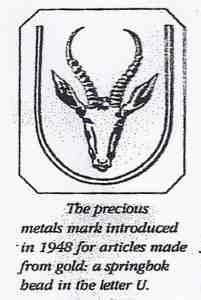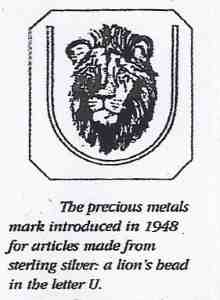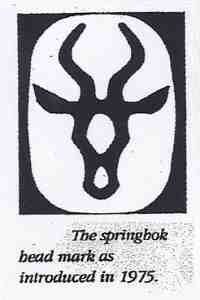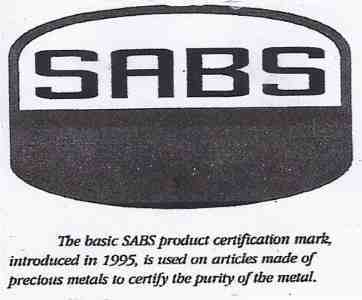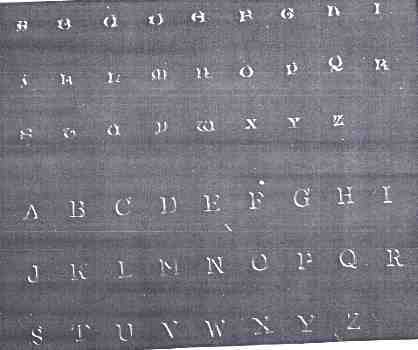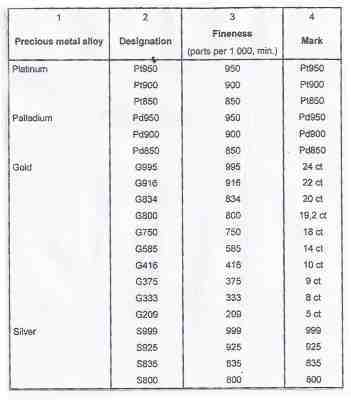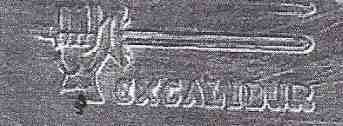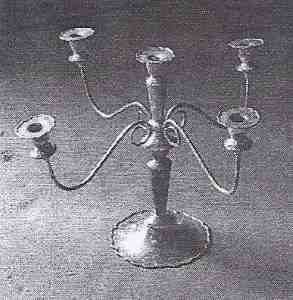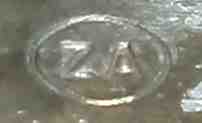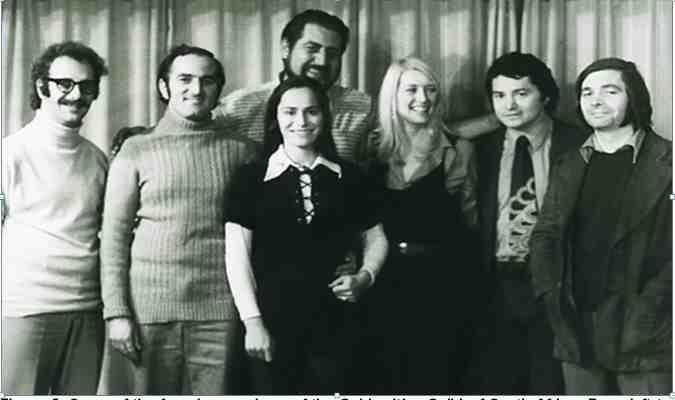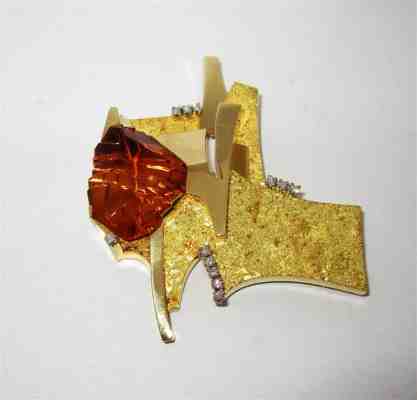A SMALL COLLECTION OF ANTIQUE SILVER |
| an article of Fred van Staden, for ASCAS - Association of Small Collectors of Antique Silver |

|
|
| |||||||||||||||||||||||||||||||||||||||||||||||||||||||||||||||||||||||||||||||||||||||||||||||||||||||||||||||||||||||||||||||||||||||||||||||||||||||||||||||||||||||||||||||||||||||||||||||||||||||||||||||||||||||||||||||||||||||||||||||||||||||||||||||||||||||||||||||||||||||||||
(click on photos to enlarge image)HALLMARKING OF TWENTIETH CENTURY SOUTH AFRICAN PRECIOUS METAL ARTEFACTSHowever, this commendable effort at standardisation fell into disuse soon after the three-year appointment of the Mint Masters came to an end. There is also no evidence that this ordinance was ever enforced (NOTE 1). Nevertheless, there is some indication that the official ‘Hope’ stamp was still in use in 1780 (NOTE 2). It appears that during the tumultuous times of the 1800s no systematic effort was made to re-establish a South African hallmarking system. In 1938, 1942 and 1958 the associations representing local jewellers and watchmakers called on the government to establish an assay office (NOTE 3) with the goal to develop and implement a hallmarking system in the Union of South Africa (NOTE 4). In all three cases their representations fell by the wayside. At the founding of the Jewellery Council of South Africa in 1972, a resolution was again adopted to devise a compulsory local hallmarking system that would denote the country, the metal content and a maker’s mark. This was to be done in collaboration with the South African Bureau of Standards (NOTE 5). For a decade no progress was made and this call was once more renewed in 1984 when representatives of the Jewellery Manufacturers’ Association, Intergold and the South African Bureau of Standards formed yet another committee to investigate the feasibility of implementing a compulsory local hallmarking system (NOTE 6). Again, the representations were unsuccessful. Throughout the twentieth century South African use of hallmarking remained voluntary. It was only in 2013 that the regulation process became legally formalised (NOTE 7). South African Buro of Standards certification marks In April 1948, at the request of the Chamber of Mines, the South African Bureau of Standards (SABS) published in the South African Government Gazette voluntary hallmark specifications for the marking of precious metals. They consisted of the letter U encircling the head of a Springbok for articles made of gold, and the head of a lion for articles made of silver. No mention was made of other precious metals such as platinum or Palladium. It was decided to use the letter U (denoting the Union of South Africa) which was used on the ammunition manufactured by the South African Mint during the Second World War, and which gained international recognition as a significant contribution to the war effort (NOTE 8). The lion and springbok heads were quite detailed and required the skill of experienced die makers. The punches were sold by the South African Mint who had an overseeing role in regulating the use of thereof (NOTE 9). In 1975, the realist images of the springbok and lion marks were replaced by a single stylistic image of a Springbok head encased in an oval form. It was thought that this new mark would give a more distinct imprint. The mark was also used for products made in platinum (NOTE 10). In 1995, the logo of the SABS (the acronym is imprinted in the top half of an oblong outline) was introduced as certification mark. It is not clear whether this mark replaced the old dating system, or whether it was used alongside (NOTE 11) the completion of the dating system that would have continued until 1999.
Images of the respective SABS certification Hallmarks in use between 1948 - 1973, 1974-1999, and from 1995 onwards. (Excerpts from SABS Bulletin, 4(7), March 1975, p.172, and SABS Bulletin, 17(2), June 1998, p.7) In addition to these standardisation marks, articles had to bear the grade marking (e.g. stg or 9ct.), followed by a letter symbol denoting the year of manufacture, along with the gold or silversmith maker’s mark. The year mark was standardised by using a gothic typeface alphabet in lower case, starting with the letter ‘a’ denoting gold and silver products made in 1948 and concluding the cycle with the letter ‘z’ in 1973. In 1974 a new alphabetic cycle was introduced consisting of upper case Roman letters, where ‘A’ represented the year 1974, ending with the letter ‘Z’ in 1999. It appears that a third alphabetic cycle was not introduced and the dating system discontinued.
An example of the Gothic (1948-1973) on top and Roman (1974-1999) lettering, below, used to denote the year in which precious metals were made in South Africa. (Photo: SABS Bulletin, 4(10), June 1975, p.225) The designation of the precious metal content was summarised by the SABS in Table 1 (NOTE 12).
Table 1: The South African Bureau of Standards specified designation of precious metals.
Where the silver content consists of 99,9% purity (indicated by the mark 999) the term ‘Fine silver’ or the letters ‘FS’ may also be used. The abbreviation ‘stg’ could be added to the mark
925 (indicating a purity of 925/1000 parts). In the case of gold content exceeding a fineness of 995/1000 (indicated by the mark 24ct.) the words ‘Fine gold’ could also be added to the markings (NOTE 13). The perception that ...we become a dumping ground for work regarded as substandard in more developed markets such as the UK and Europe (NOTE 14) has been addressed by this initial step in the standardisation of a South African hallmarking system and import requirements. Perhaps a dating system may still be introduced at a later stage. Since its inception in 1948 until 2012, the SABS certification marking remained voluntary. Those who registered with the SABS, were required to regularly submit samples of their work for certification of its precious metal content. The SABS performed the role of voluntary assay office (NOTE 15).
An example of an SABS certified hallmark used in 1949 on a candelabrum: (top) three stamps bearing the certification mark of a lion’s head within the letter U, the letters STG (sterling silver grade mark) and the gothic date letter B indicating 1949 as the year of marking. (middle) maker’s mark consisting of a hand holding a sword and the inscription EXCALIBUR (no more information on the maker is as yet available). (bottom) stamp of South African origin. (Photo: Ms C. Meyer, Ditsong Museum, Pretoria, 2014.) It appears that during the 20th century, the SABS certification system was mostly used on silver flatware and hollowware. Perhaps because the certification mark system was voluntary and consisted of four elements, most creative jewellers resorted merely to a maker’s mark and precious metal indicators.
From 2013 all South African made precious metal goods must contain the ZA mark denoting their South African origins. A long overdue first step in proper hallmarking practice.
(Photo: F. van Staden, Pretoria, 2012) In 2011 the Standards division of the SABS published a revised edition of a hallmarking standard for articles made of precious metals. It consists of the letters ZA encased in an oval, denoting South Africa as country of origin. A year mark is not required but it was recommended that the grade marking content be indicated alongside the ZA mark. This is then followed by the individual maker’s mark. This recommendation was written into legislation in 2013 (NOTE 16) where all South African made precious metal products above 1 gram in weight are required to comply with the specifications. Individual maker’s marks remained optional. In addition, the country of origin will also have to be indicated on imported precious metal artifacts (NOTE 17). Portfolio of MR Arthur Boddy According to the research done by Mr Arthur Boddy (NOTE 18), an ardent researcher and student of 20th century South African silver, the maker’s marks listed below (NOTE 19), can be found on silver and gold ware made by smiths who were either registered with the SABS or who just made use of their dating mark. Boddy endeavoured to develop a record of local precious metal maker’s marks and their owners (NOTE 20). In a series of letters written between 1972 and 1975 he attempted, with variable success, to gain information on the maker’s marks of local silversmiths from the SABS, The South African Mint and the Jewellery Council of South Africa. In one letter, the SA Mint made it clear that such information on the clients of the Mint was confidential … and cannot be transmitted to the public (NOTE 21). This secretive power play attitude was perhaps also a manifestation of the authoritarian zeitgeist in South Africa at the time. In 1974, Boddy remarked on a notable lack of knowledge amongst silver- and goldsmiths about the SABS hallmarking standard (NOTE 22). This may have been due to a combination of factors that include a lack of marketing, the voluntary basis of the marking system, as well as not wanting to submit one’s work to the scrutiny of an assay office because of extra administrative demands or because the required silver or gold content was not met. Although the information below is sketchy, it provides an initial knowledge base for the recognition and identification of locally made silver in the mid twentieth century. In 1972 (NOTE 23) the following businesses were permit holders for the making of sterling silver articles under the SABS mark: A&M Cohen, Manufacturing Jewellers and Diamond Mounters, 95 Mooi street, Johannesburg. No maker’s mark has yet been determined (NOTE 24). La Scala, Manufacturing jewellers (Pty) Ltd, Cennewa House, 12th floor, West Street, Durban This manufacturer created hollow and flatware such as silver tea services along with jewellery. They used the name ‘La Scala’ as their maker’s mark (NOTE 25). Em-Ess Silverware (Pty) Ltd, Isando, East Rand. Described in 1975 as the largest producer of silver plate and sterling silver, this manufacturer produced jewellery (such as rings) along with flat- and hollow ware such as candlesticks, salvers, candle snuffers, meat covers and letter openers. They made use of the following marks a springbuck head, the marks S925 (denoting sterling silver) and the letters S and a date letter (S denoting the retailer Spilhaus and a date letter stemming from the SABS system) (NOTE 26). A notable commission was the creation of 250 pairs of sterling silver goblets to mark the 25th anniversary of Diners’ Club International. The Diner’s Club emblem in addition to the SABS marking system was used on the goblets. A set number was stamped below the SABS standardization marks. The first two pairs of goblets were in 1975 presented to the Africana Museum in Johannesburg as well as to the Director of the SABS. The goblets were designed by Mr T. Cavalho and were estimated to be worth around R300 at the time (NOTE 27). The South African Mint, Pretoria (now Centurion). From 1948 the South African Mint was registered with the SABS as a hallmark permit holder. They made use of the acronym SAM as maker’s mark (NOTE 28). E. Tiessen (Pty) Ltd, Manufacturing Jewellers, 14 Juta Street, Braamfontein, Johannesburg. They manufactured small articles such as silver chains, identity bracelets and sometimes other articles of jewellery such as cuff links. The maker’s mark ET+ was used (NOTE 29). Norman Watson, Engraver and Manufacturing Jeweller (Pty) Ltd, 16 Fenton Road, Durban Central. This engraver and manufacturing jeweller made use of the following marks. Firstly, their registered trade mark ‘Dick King’, the ‘stg.’ abbreviation, then the SABS mark of a lion’s head, and lastly the SABS year mark (NOTE 30). Natal Wholesale Manufacturing Jewellers (Pty) Ltd, Durban. Natal Wholesale Manufacturing Jewellers was born in 1988 from the amalgamation of Durban Manufacturing Jewellers (established in the late 1940s) and Natal Wholesale Jewellers. In 1998 their production range consisted of rings, charms earrings and pendants. A small amount of hand crafted jewellery was also made. Apart from sterling silver, around 133kg of 9 carat gold alloy was used per year in the late 1990s. They made use of the SABS precious metals marking system (NOTE 31). Joe Malamed (Pty) Ltd from Cape Town is also mentioned as making use of the standardization marks of the SABS (NOTE 32). Other marks recorded in the Boddy portfolio include: R & G Metal Art (Pty) Ltd, 68 New Market street, Foreshore, Cape Town. Owner Radoslav Kirov was born in 1955 in Bulgaria where he was trained as a coppersmith. Apart from copper, steel and wood he also produced hollow and flat silverware. He specialised in spun and spot hammered ware. He retailed his work through Spilhaus but also undertook private commissions. Although he was not registered with the SABS he made use of its date letters. His hallmarks consisted of the letter K (for Kirov), the sterling silver grade mark S925, the inscription ‘Spilhaus’ (for wares that were sold through this retailer) as well as the date letter according to the SABS convention. Don Sheasby and Lorna Quinton, Cape Town. This husband and wife team make use of the marks ‘Sheasby’ and ‘Quinton’ along with the marks ‘silver’ and 925. He is described as an artist craftsman whereas his wife specialised in the cutting and polishing of semi-precious stones. Sheasby is one of only a handful restorers of silver in the country. One reviewer described him as having … an instinctive feel for his work and relates in an almost mystical way with the original craftsman (NOTE 33). Silvercraft, Cape Town. Harold H. Felstein in partnership with Thomas McQuillan established this firm in 1953. They produced the new mace for parliament in 1961 which was reputed to be the largest piece of wrought gold at the time in the country. Thomas McQuillan used the letters MCQ on his work (NOTE 34). South African Goldware, (Johannesburg) This firm used the letter SAG followed by the imprint of a protea (or similar flower) as maker’s mark. It was active during the 1950s and the 1960s and made the christening mug of mr Boddy’s son. Items by this firm regularly appear on local antique and collectors’ markets (NOTE 35). The goldsmith’s guild of SA For a brief moment during the mid-1970s, a number of local goldsmiths came together to create a better structured environment to work in. They formed the Goldsmiths Guild of South Africa. It was a time of hope and enthusiasm, but it did not last long. Even though all of the founder members enjoyed national recognition for their work, their technical and creative brilliance was not strong enough to withstand the forces that were working against them. Within a decade their dream of a better future fell apart. Late in 1973, under Peter Cullman’s leadership, the Goldsmiths Guild of South Africa was born in Johannesburg. Other founding members were Dieter Dill, Ewald Kratz, Liz Bezuidenhout-Kratz, Erich Frey, Kurt Donau, Jochen Kessel, along with Hartmut and Ilse Jäger (NOTE 36). All, except for Liz Kratz (who was a South African and educated in Stellenbosch), were immigrants from Switzerland or Germany. They were extensively trained and highly skilled precious metal artists with master’s degrees in design and goldsmithing along with qualifications in gemmology. The majority received their training at Pforzheim in Germany.
Some of the founder members of the Goldsmiths Guild of South Africa. From left to right: Peter Cullman, Hartmut & Ilse Jäger, Kurt Donau, Liz & Ewald Kratz and Jochen Kessel
(Photo: H. Jäger, Australia, 1973) A three-page constitution was adopted at the founding meeting of the Guild. Their aim was to produce and promote high-quality jewellery as an art form and to hold nationwide and international exhibitions. Another lofty ideal was to raise public awareness of original South African designed gold and silver jewellery. The Guild was to meet from time to time to assess the implementation of its aims as well as to share information on new designs and techniques in experimental jewellery making (including the use of facetted gemstones, mineral specimens and enamelling).
Logo created by the Goldsmiths Guild of South Africa (Photo: Peter Cullman, Canada, 1974) The Guild created a logo (a smith’s anvil in combination with a stylised ring) that members were requested to stamp on their work in conjunction with their own makers’ marks as well as the caratage of the piece. After earlier attempts to establish a South African hallmarking system was abandoned in the late 1700s, talks were only held again from 1938 to establish a proper register, but no final agreement materialised amongst the members of the South African Jewellers’ Association at the time. The directive of the Goldsmiths Guild to its members to produce works with their own marks and Guild’s stamp of approval constituted the first real attempt to reintroduce a local standardised hallmarking system again. In an effort to differentiate their work from manufacturers who made use of mass-produced techniques, the Guild’s constitution specifically stipulated that "No jewellery of repetitive or ordinary nature may bear the logo stamp of the Guild." (NOTE 37) Membership of the Goldsmiths Guild was optional and recommendations made by the Guild were not binding on the local goldsmith community. From the onset the Guild was represented at the Jewellery Council of South Africa (NOTE 38). Nevertheless, the proper organisation of the industry as a whole (which included the field of gemmology) remained open ended throughout the twentieth century (NOTE 39). At an Intergold jewellery competition held by the Chamber of Mines in 1974, members of the Goldsmiths Guild received ten awards, including three first prizes along with the most outstanding design in gold. In 1975, two years after the formation of the Guild, the members arranged their first group exhibition in Johannesburg consisting of 120 pieces in precious metals. The exhibition proved to be such a success that in November of the same year a follow-up exhibition was held in Stellenbosch (NOTE 40). A number of other exhibitions were also held by twinning haute couture with artist jewellery. This was followed by a number of local exhibitions. In 1979 the Guild even opened a short-lived Goldsmith Gallery in Rosebank, Johannesburg where they intended to feature permanent exhibitions by South Africa’s foremost goldsmiths (NOTE 41).
Intergold 1974 Grand Prix winning entry consisting of a combination neckpiece, brooch and a buckle by Goldsmith Guild members Liz and Ewald Kratz (Photo: From the Kratz résumé, Brisbane, Australia) Given the individual and unique design of every piece they made, these goldsmiths were artists in their own right. Precious metals became the sculptural basis with which they combined texture, relief, line and colour to create jewellery of high quality. Precious stones were integrated in their designs to punctuate or emphasise aspects of their compositions. With youthful boldness, this generation of goldsmiths also expanded their palette of design materials to include organic elements such as wood and ivory. In some cases, copper and perspex were also used. They also celebrated the abundance of South African semi-precious stones by absorbing these into their work. The imaginative captivation of unique colour tones inherent in stones such as tiger eyes, amethysts, agates, rose-quartz and jade in their creations gave way to an increasing acceptance of semi-precious stones as part of leading jewellery design in South Africa (NOTE 42). Some goldsmiths used their well-developed technical skills to collaborate with local painters and sculptors in giving expression to jewellery sets, hollowware and flatware. For example, Kurt Donau collaborated with Cecil Skotnes, Edoardo Villa and Hannes Hars on a number of occasions (NOTE 43). In 2012 a pair of cuff links designed by Cecil Skotnes and made by Kurt Donau was auctioned for R9 500 by Stephan Welz & Co. in Johannesburg. In another collaboration, Erich Frey worked with Walter Batiss and Alexis Preller on creating jewellery pieces and medallions. Frey’s legacy is also gaining increasing attention at auction. In February 2012, at the Strauss & Co. auction in Cape Town, a collection of Erich Frey jewellery that contained bangles infused with elephant hair were sold well above the auctioneers’ estimates (NOTE 44). However, the conditions in which the Guild did its work conspired against its successful growth. Chief amongst these was an unresponsive and largely indifferent government that looked upon the profession with suspicion. More often than not, local goldsmiths were regarded as potential illicit traders of raw precious metals. Consequently, little was officially done to nurture and develop an organised community of resident gold- and silversmiths. Political instability caused by the policy of separate development along with the Job Reservations Act further compounded the problem of rooting an indigenously sound and prosperous goldsmiths association. Whereas little formal training and job opportunities for black South Africans existed in the sector during the 1970s, white goldsmiths had to deal with increasing international sanctions that made exposure of their work very difficult, resulting in having to work in a small local market. Also internally, within a few years of its formation, the Goldsmiths Guild began to neglect the mandate contained in its constitution. Already in the early 1980s their group exhibitions began to dry up and some members failed to implement the recommended hallmarking system. During the late 1970s members of the Guild began to emigrate to other countries, especially after the Soweto riots in 1976. Over the years that followed, all of the founding members of the Goldsmiths Guild of South Africa took their considerable skills to settle elsewhere. Along with political instability, a sharp increase in theft and violent crime compelled most to emigrate from South Africa. Peter Cullman relocated to Toronto while Erich Frey and Dieter Dill returned to Germany. Kurt Donau resettled in his native Switzerland and Jochen Kessel went to London. Ewald and Liz Kratz as well as Hartmut and Ilse Jäger emigrated to Australia (NOTE 45). By the late 1980s membership numbers dropped to such an extent that the Guild was no longer a viable association. The formation of the Goldsmiths Guild of South Africa represents a notable effort to create an organisational platform for the advancement of high-quality local jewellery. Unfortunately, owing to the constraints at the time, it was destined to be only a momentary flash in the pan of our local jewellery-making history. Hallmarking and the recording of signifiers In response to the ongoing call by gold- and silversmiths as well as purchasers and collectors for the systematic recording and listing of creative silver- and goldsmith insignia or makers’ marks (NOTE 46), an initial listing of local makers' marks used during the twentieth century was compiled and is shown in the table below. It should be noted that the list is not conclusive (NOTE 47) and only serves as an initial record of noted gold-. and silversmiths who used a maker's mark. In keeping with the listings of Western hallmarks (NOTE 48), the emphasis is placed on the name of the maker, a description of the maker's mark(s), the dates during which the mark was used and the city where the studio or workshop was located. Table 2: Chronological summary of makers' marks by some noted silver- and goldsmiths working in South Africa during the early to late twentieth century.
Concluding remark As a concluding observation, there are also those manufacturers and artist jewellery makers who did not mark their creations, for whatever reason. This creates a legacy problem, since their work cannot be catalogued or defined with any certainty, except for perhaps design features that could be tied to a specific artist jeweller. Sadly this heritage is bound to disappear into an amorphous world without a history. In addition, creative silver and goldsmiths are often confronted with having to melt up the creations of (earlier) colleagues. This presents the dilemma of a continued withering down of our identifiable precious metal heritage. Perhaps it is naïve to expect jewellers to refer such items to antique and collectible dealers for resale. Perhaps the collectible market is too small and not being cultivated either. Nevertheless, as a country we are the poorer for not making a more concerted effort to conserve these beautiful and joyful expressions of our heritage. ENDNOTES PAGE
|
